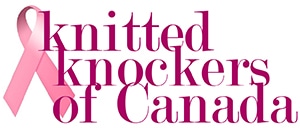Last month we talked about Wrap & Turn Short Rows, one of the most common forms of short row shaping we see in knitting patterns. Or is it? Lately, German Short Rows are being called for more and more frequently in patterns as they produce a smoother fabric than their wrap & turn counterpart, are easy to work and easy to identify.
If you worked a swatch along with us last month, or if you’ve worked Wrap & Turn Short Rows in the past, you will have noticed that this isn’t the most discreet method, especially in stocking stitch. While the wrap is resolved in subsequent rows, there is almost always some stitch distortion that is visible on the right side of the work. Enter German Short Rows. Executed by working a yarn over to pull up a stitch from the row below, once resolved, the results are nearly invisible.
For this swatch I’m using Estelle Superwash Merino DK in shade 40323, Taffy, and 4mm needles. Why not grab some stash yarn and needles and work with me – this is definitely a great technique to have in your wheel house!
On knit rows, knit to the desired turning point and turn your work so the purl side is facing. Slip the first stitch as if to purl and then bring the working yarn up over the top of the right needle and around to the front and in position to purl. In doing so, this pulls both legs of the slipped stitch around the needle creating a double stitch.

On the following knit row, you will see that the double stitch, just before the turning point, is quite visible meaning it’s always easy to locate and resolve.

Once you knit across the row to the double stitch, simply knit the two legs together and carry on as indicated in your pattern.

Purl rows are worked in the same manner. Purl to the desired turning point and turn your work so the knit side is facing. Slip one stitch as if to purl and pull the working yarn up over the right needle to the back of the work and in position to knit, stretching out the stitch on the right hand and creating a double stitch.

On the following purl row, purl to the double stitch located right before the turning point. In Wrap & Turn Short Rows, the wrap can be difficult to locate in purl stitches; German Short Rows eliminate that problem as they are easily identifiable by the two legs.

Purl those two legs together and you have now completed German Short Rows on both the knit and purl sides! That wasn’t so hard after all, was it?

Let’s take a look at the front of the work and you will see (or rather, not see) any distortions to the fabric, any gaps, or bulky stitches. It’s knitting magic!

German Short Rows can replace any short row technique, just remember to adjust your count! To replace a Wrap & Turn, simply knit one stitch further than indicated as the turning point in German Short Rows is the same stitch that is wrapped in W&T Short Rows. It’s really that easy!
If you’re looking for a simple yet sensational project to try out German Short Rows, download a free copy of our Eclipse Shawl, adjust your stitch count as indicated above, and get ready to be thrilled!

I hope you will be as impressed with German Short Rows as I was the first time I tried this technique. And if this impresses you, stay tuned next month for Japanese Short Rows!
Stay safe and be well everyone!





